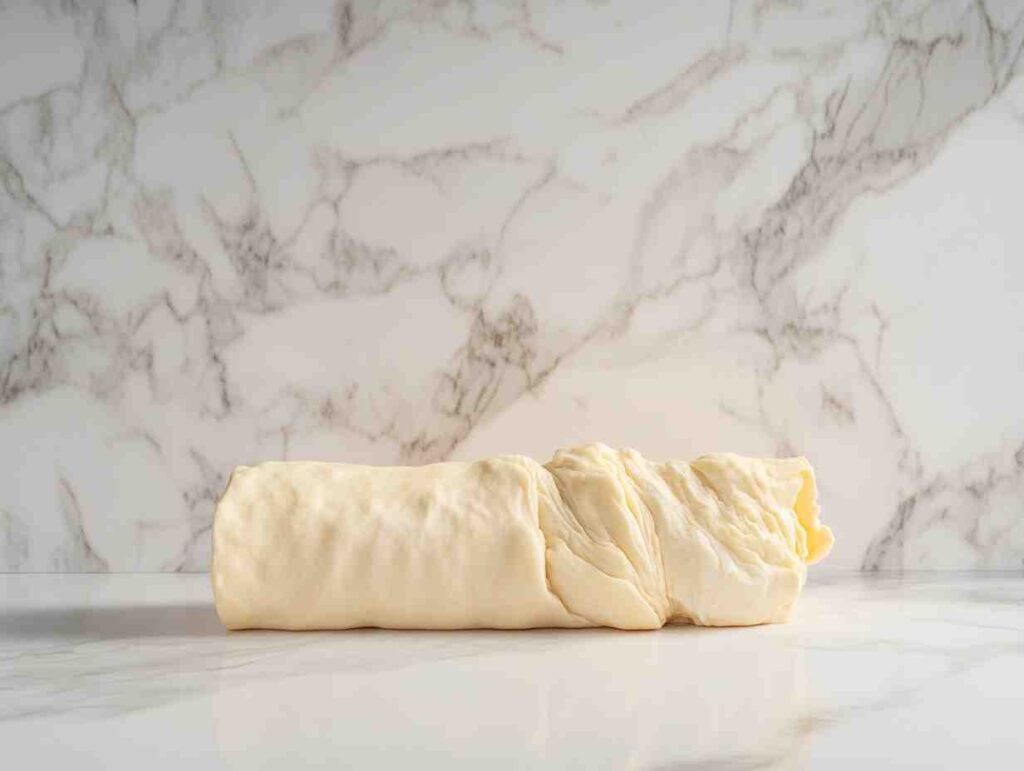Have you ever wondered what is a small croissant called? These delightful miniature versions of the classic French pastry are a popular treat. Whether you’re planning a brunch or looking for a petite snack, knowing the correct term for a small croissant is useful. In this article, we’ll explore the names, variations, and everything else related to these delightful baked goods. Therefore, let’s dive in!
Unveiling the World of Small Croissants: Petit Croissant and Beyond
While the standard croissant is well-known, its smaller counterpart has various names, depending on the context and region. The most common term for what is a small croissant called is petit croissant. This French phrase simply translates to “small croissant.” However, other terms may also be used. Therefore, understanding the nuances of each name can enhance your pastry knowledge.
The Charm and Allure of Miniature Croissants
Miniature croissants, or petit croissant, are popular for their perfect size. These are a great size for a small snack or treat. They are ideal for buffets, parties, and any other events. In addition, the delicate layers and buttery flavour are packed into a smaller package. Therefore, they are great for those who like to indulge in moderation.
Petit Croissant: The Most Common Term for a Small Croissant
As mentioned, the most common term for what is a small croissant called is petit croissant. This name is derived from French. It is widely used internationally. However, it is not the only term you will encounter. Therefore, it is important to know all variations.
The French Connection: Petit Croissant
The term petit croissant is a staple in French bakeries. Therefore, if you ask for a petit croissant in France, you will receive a smaller version of the traditional crescent-shaped pastry. This is an easy term to remember. In addition, it is commonly used in many other countries too.
Variations of Petit Croissant in Different Cultures
While petit croissant is widely understood, there are cultural and regional variations to consider. For example, some bakeries might use other names. Therefore, it’s always a good idea to check the label or ask for clarification. This will make sure you get what you want.
Other Names for Small Croissants: Exploring Regional Terms
Although petit croissant is the most used term, other names exist in various regions. Therefore, it is useful to know them.
Mini Croissant: A Simple and Direct Alternative
The term mini croissant is very straightforward. It is also widely used, particularly in English-speaking countries. This term clearly indicates the smaller size of the pastry. Therefore, it is a very common way to refer to it.
Croissant Bites: Focusing on the Snackable Aspect
Some bakeries or brands may refer to small croissants as croissant bites. This name emphasizes their size and suitability as bite-sized treats. Therefore, this term works well as a description.
Regional Variations and Slang
In some areas, you might find other colloquial terms. This is usually a local name for small croissants. These variations, however, are less common. Therefore, the other names mentioned are more broadly used.
Making Petit Croissants at Home: A Baking Adventure
If you’re feeling adventurous, you can try making petit croissants at home. This can be a fun and rewarding process. In addition, it also results in some great baked goods. Therefore, it is well worth the effort.
Essential Ingredients for Petit Croissants
Here’s a list of what you’ll need to make petit croissants at home:
- All-Purpose Flour: 4 cups
- Warm Milk: 1 cup
- Instant Yeast: 2 1/4 teaspoons
- Granulated Sugar: 1/4 cup
- Salt: 1 teaspoon
- Unsalted Butter, Cold: 1 cup (2 sticks)
- Egg: 1 for egg wash
These are the basic ingredients you will need.
Step-by-Step Baking Instructions

- Activate the Yeast: In a small bowl, combine the warm milk, sugar, and yeast. Let it sit for 5-10 minutes until foamy. Therefore, this step is important to activate the yeast.
- Combine Dry Ingredients: In a large bowl, whisk together the flour and salt.
- Add Wet Ingredients: Add the yeast mixture to the flour. Mix until a shaggy dough forms.
- Knead the Dough: Turn the dough onto a lightly floured surface. Knead for about 5-7 minutes. The dough should be smooth and elastic.
- First Rise: Place the dough in a lightly oiled bowl. Cover and let it rise in a warm place for 1-1.5 hours. The dough should double in size.
- Prepare the Butter: While the dough is rising, prepare the butter. Cut the cold butter into thin slices. This step will help make layers in the dough.
- Roll Out the Dough: Gently punch down the risen dough. Roll it out into a large rectangle on a lightly floured surface.
- Layer the Butter: Place the slices of cold butter over two thirds of the dough. Fold the unbuttered third over the middle third. Fold the other side over, creating a layering effect.
- Chill the Dough: Wrap the dough in plastic wrap and refrigerate for 30 minutes.
- Repeat Rolling and Folding: Repeat the rolling and folding process twice more. Chilling for 30 minutes after each time. Therefore, this step will give you those beautiful layers.
- Final Roll Out: Roll out the dough to a 1/8 inch thickness.
- Cut the Dough: Cut the dough into small triangles.
- Shape Croissants: Roll each triangle into a croissant shape.
- Second Rise: Place the shaped petit croissants on a baking sheet. Cover and let rise for another 30-45 minutes.
- Egg Wash: Brush the tops with an egg wash. This will help give them a golden colour.
- Bake: Bake in a preheated oven at 375°F (190°C) for 15-20 minutes. The petit croissants should be golden brown.
- Cool and Serve: Let them cool slightly. Serve and enjoy your delicious homemade petit croissants.
Tips for Making the Best Small Croissants
Here are a few tips to help you succeed when making petit croissants at home.
- Keep Butter Cold: The butter should always be kept cold. This will ensure that it creates layers in the dough. Therefore, it is important to not skip this step.
- Chill the Dough: Chilling the dough is also very important. It helps the butter stay firm. This will make it easier to roll. Therefore, ensure you have enough time to do this correctly.
- Use a Thermometer: Use a thermometer to check the temperature of the milk. Therefore, it is best to make sure it is the right temperature.
- Be Gentle: Be gentle when handling and rolling the dough. Therefore, do not rush this step.
Petit Croissant vs. Regular Croissant: Key Differences
Now that we have established what is a small croissant called and how to make them, it is important to see how they differ from standard croissants. Therefore, let’s dive in.
Size and Portioning
The most obvious difference is the size. Petit croissants are much smaller than regular croissants. This makes them ideal for smaller portions. They are also good for buffets or parties. Therefore, size is the biggest difference.
Baking Time and Technique
The baking time for petit croissants is slightly shorter than that for regular croissants. This is because of their smaller size. The method of preparation is very similar, however. Therefore, you can adjust the baking time for the smaller versions.
Serving Suggestions
Petit croissants are often served as small snacks. They are also popular for brunches and light refreshments. Regular croissants are sometimes used for sandwiches or with butter and jam. Therefore, how you serve them will vary.
Enjoying Petit Croissants: Serving and Pairing Ideas
Petit croissants are a versatile treat. They are great for a variety of occasions. They also pair very well with various items.
Pairing Petit Croissants with Coffee and Tea
Petit croissants are a classic choice with coffee or tea. The buttery, flaky pastry complements the warm beverages very well. Therefore, this pairing is a simple but delicious choice.
Petit Croissants as Part of a Brunch Spread
These miniature pastries are perfect for brunch. They also look great on a plate. In addition, they are ideal for a casual brunch with friends.
Savory and Sweet Fillings for Petit Croissants
You can add both savory and sweet fillings to petit croissants. Chocolate, cheese, and ham are all popular options. Therefore, feel free to experiment with your favourite options.
Nutritional Value of Petit Croissant: What to Consider?

Petit croissants are delicious treats. Therefore, it’s important to be aware of their nutritional profile. Here’s a breakdown of their nutritional aspects:
Caloric Content and Macronutrient Breakdown
Petit croissants are high in calories and fat. This is due to the butter used in the recipe. It is also a source of carbohydrates. However, they are best consumed in moderation.
Vitamin and Mineral Content
They do not contain very high amounts of vitamins or minerals. However, there is still a small amount of calcium. Therefore, it is best to think of them as a treat rather than a nutritious choice.
Dietary Considerations
Petit croissants are high in fat and carbohydrates. Therefore, those watching their calorie intake should consume them in small quantities. In addition, they are usually not gluten-free.
Nutritional Information Per Petit Croissant (approximate):
| Nutrient | Amount (Approximate) |
| Calories | 100 – 150 |
| Fat | 6 – 8 g |
| Saturated Fat | 4 – 6 g |
| Carbohydrates | 12 – 18 g |
| Protein | 2 – 3 g |
| Sodium | 80 – 120 mg |
Note: Nutritional values are approximate and can vary based on specific preparation methods and ingredients used.
Frequently Asked Questions (FAQs) About Croissants
Let’s answer some of the common questions regarding croissants. Therefore, we can clear up any confusion you might have.
What are the two types of croissants?
The two main types of croissants are straight croissants (also called “ordinary” croissants) and curved croissants (also called “butter” croissants). Straight croissants use vegetable fats, while curved ones use butter, resulting in different flavours. Therefore, the difference between them lies in their shape and fat content.
What is the difference between a croissant and a cornetto?
A croissant is a French pastry with a flaky, buttery texture. A cornetto, on the other hand, is an Italian pastry that’s usually less buttery and slightly sweeter. It often has a softer, brioche-like texture. Therefore, these are very different pastries.
What is the difference between a croissant and a gipfeli?
A croissant is a French pastry that uses layered dough with butter. A gipfeli is a Swiss pastry that’s similar but often has a denser, less flaky texture. It is also often made with different types of fat. Therefore, they are very similar but also have some key differences.
What are croissants called in France?
In France, croissants are simply called “croissant.” The term “petit croissant” is used specifically for the smaller version. Therefore, the simple name is what they use there.
Conclusion: Embracing the Delight of Petit Croissants
Knowing what is a small croissant called can be very useful for anyone. Petit croissants are a delightful miniature version of a beloved classic. Whether you enjoy them as a small treat or part of a larger breakfast spread, these pastries are a wonderful addition to any occasion. So, go ahead and enjoy your next petit croissant!

